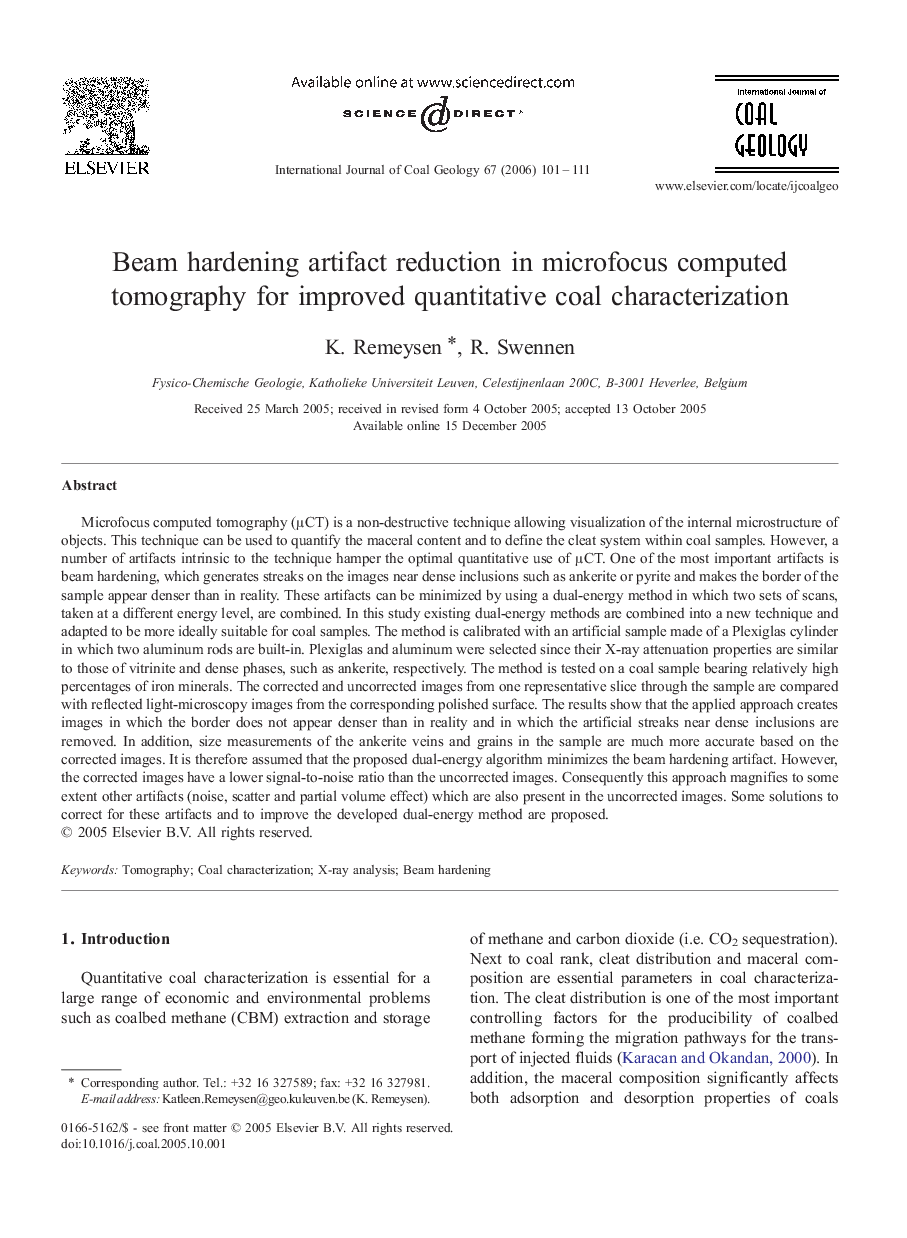| کد مقاله | کد نشریه | سال انتشار | مقاله انگلیسی | نسخه تمام متن |
|---|---|---|---|---|
| 1754444 | 1522668 | 2006 | 11 صفحه PDF | دانلود رایگان |

Microfocus computed tomography (μCT) is a non-destructive technique allowing visualization of the internal microstructure of objects. This technique can be used to quantify the maceral content and to define the cleat system within coal samples. However, a number of artifacts intrinsic to the technique hamper the optimal quantitative use of μCT. One of the most important artifacts is beam hardening, which generates streaks on the images near dense inclusions such as ankerite or pyrite and makes the border of the sample appear denser than in reality. These artifacts can be minimized by using a dual-energy method in which two sets of scans, taken at a different energy level, are combined. In this study existing dual-energy methods are combined into a new technique and adapted to be more ideally suitable for coal samples. The method is calibrated with an artificial sample made of a Plexiglas cylinder in which two aluminum rods are built-in. Plexiglas and aluminum were selected since their X-ray attenuation properties are similar to those of vitrinite and dense phases, such as ankerite, respectively. The method is tested on a coal sample bearing relatively high percentages of iron minerals. The corrected and uncorrected images from one representative slice through the sample are compared with reflected light-microscopy images from the corresponding polished surface. The results show that the applied approach creates images in which the border does not appear denser than in reality and in which the artificial streaks near dense inclusions are removed. In addition, size measurements of the ankerite veins and grains in the sample are much more accurate based on the corrected images. It is therefore assumed that the proposed dual-energy algorithm minimizes the beam hardening artifact. However, the corrected images have a lower signal-to-noise ratio than the uncorrected images. Consequently this approach magnifies to some extent other artifacts (noise, scatter and partial volume effect) which are also present in the uncorrected images. Some solutions to correct for these artifacts and to improve the developed dual-energy method are proposed.
Journal: International Journal of Coal Geology - Volume 67, Issues 1–2, 3 May 2006, Pages 101–111